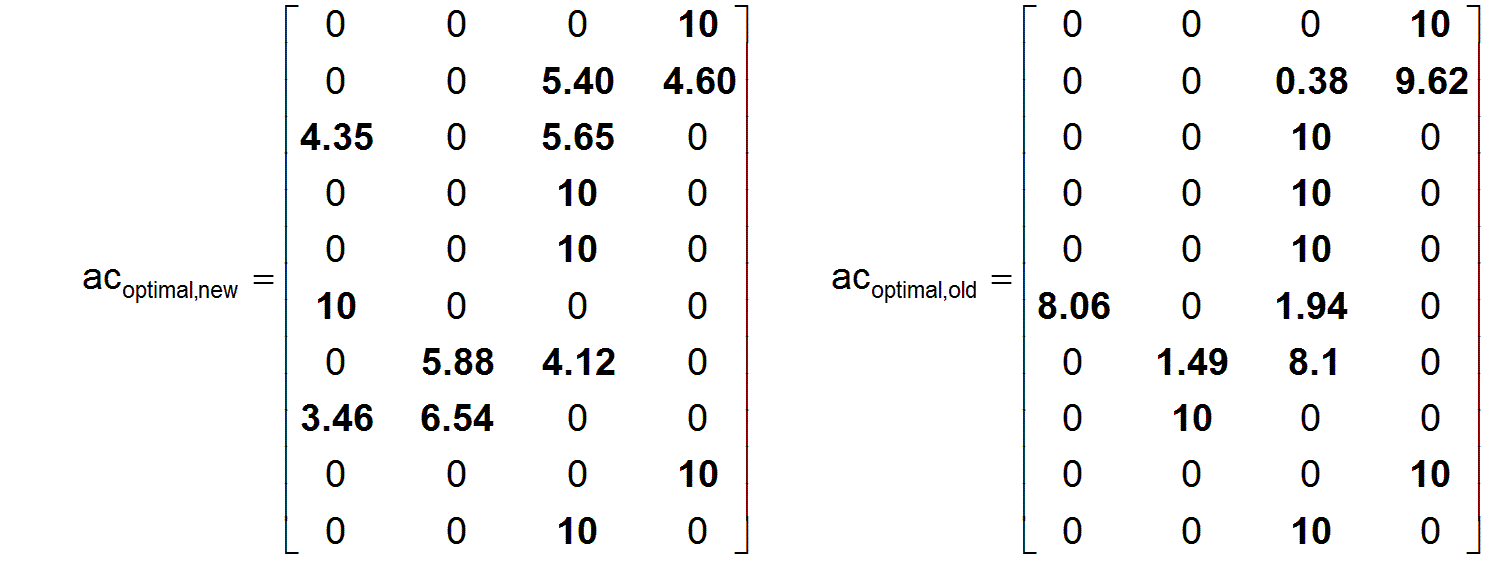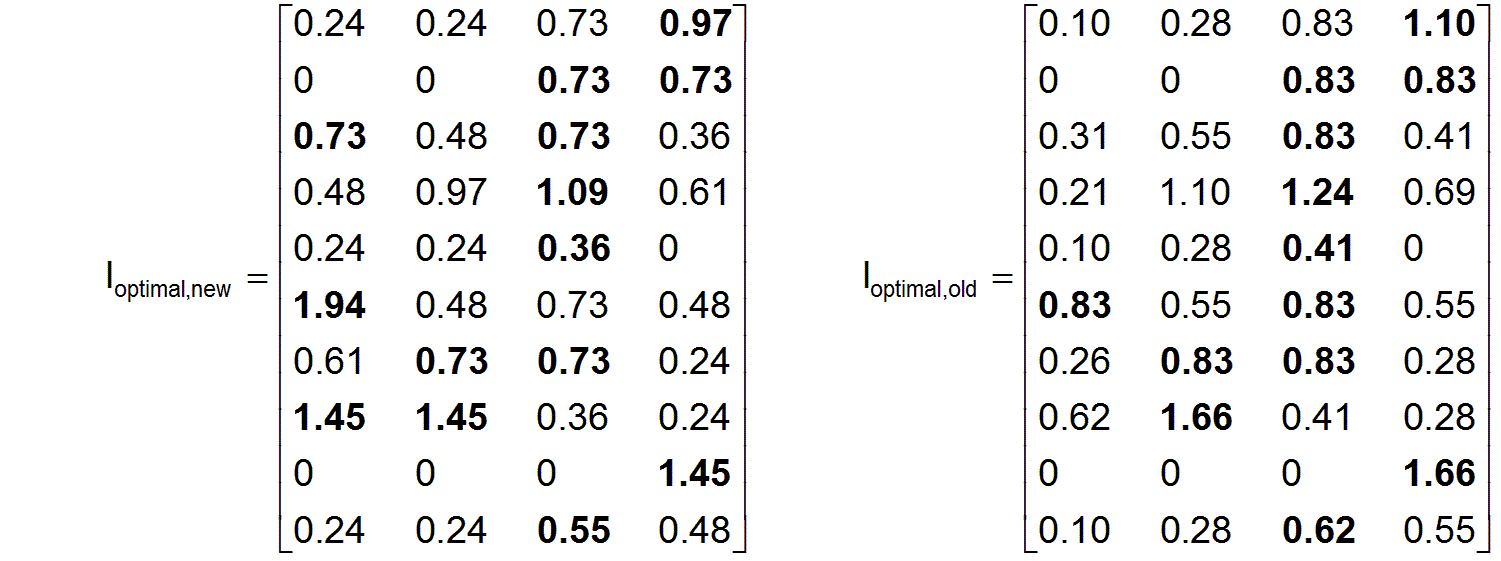7 Some selected analyses to demonstrate the capabilities of the model
7.1 Change in the performance evaluation between the individual professions by changing the performance needs structure
A variation of the demonstration example will show how the individual performance evaluation changes due to a change in the structure of the overall societal needs for work performance. The only modified parameter in the needs-based performance structure db0 is parameter db01, which is altered from 2 to 4.
db0new = [ 4 2 3 4 ] db0old = [ 2 2 3 4 ]
The simulation calculation over n4=300 cycles converges similarly to the original example. It of course results in another optimal employment matrix ac

This also results in different optimal piece wages lsoptimal and different individual wages loptimal.
lsoptimal,new=[0.242 0.242 0.364 0.242] lsoptimal,old =[0.103 0.276 0.414 0.276]

A comparison between the realized individual wages (printed in bold) and the potential wages shows that, as expected, all potential wages are lower than the realized ones, so that no worker in this optimal state of the employment matrix aspires to change profession and thus to worsen the optimal employment matrix.
What is more interesting, however, is the comparison of wages between the old and the new example. The same work within one profession will only be valued differently due to different needs of society. This shows an essential difference between the concept of performance in physics and the concept of performance in the field of societal work. In physics, the conversion factors between various performances or forms of energy are always the same. Due to the need to optimize the overall societal employment structure there is a comparability of different work performances via the quantities of individual wages within a labor market in societal work. However these comparisons are only relative since they always depend on the current level of the productive forces' development in society as a whole.
This example is evidence that the Darwinian ideology that the stronger (= better = more efficient) wins and the weaker does not deserve to survive is not applicable to a human society with joint production. This argument is often used by those who have just found a more favourable position in the distribution of social goods. With this ideology, it is tacitly assumed that human performance, similar to physical performance, is a fixed quantity in itself and whoever cannot achieve this performance or can only achieve this to a small extent would be once and for all inferior or useless to society. That is obviously wrong. In a society with collective work the spectrum of different productivity profiles brings the possibility of increasing productivity for society as a whole.
Return Go on